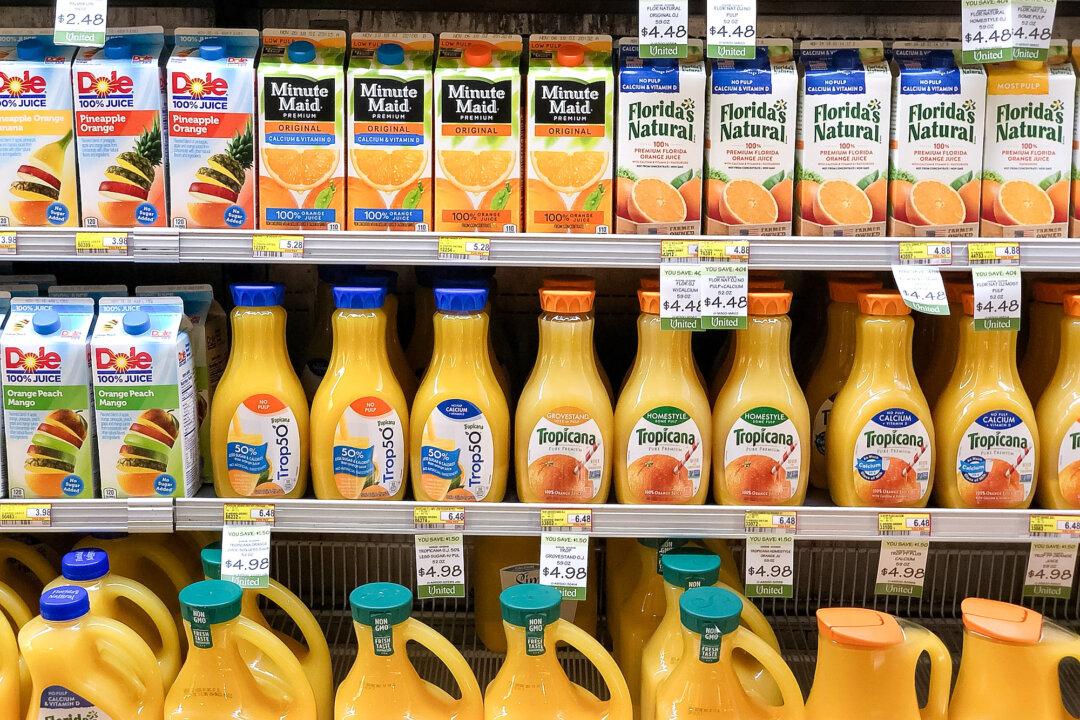The price of orange juice has risen by more than a third in 2024 as production in major supplier Brazil continues to remain low while producers fight against the “greening” disease affecting crops.
The prices of orange futures have risen around 35 percent this year so far. Orange futures were trading at $4.41 a pound as of 3:35 a.m. EST on June 7, up from $3.25 per pound at the beginning of 2024. Since 2020, prices are up by 354 percent from $0.97 per pound. The spike has been attributed to declining production of oranges.






